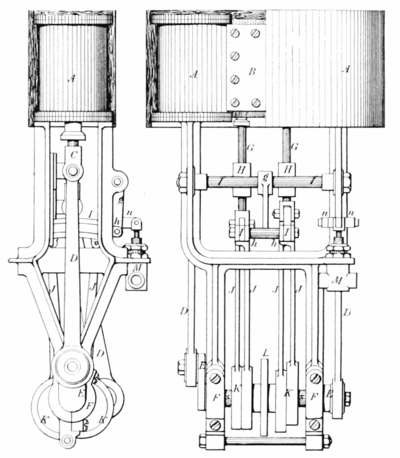supplied to the burner, and this supply in turn is regulated by the pressure of the steam, so that the action is entirely automatic. The cylinder H is a reservoir of compressed air, connected with tank I, so that the gasoline is under pressure, and therefore is forced through the pipe to the burner under the boiler. Between the burner and the tank there is a valve controlled by the steam pressure, being opened when the pressure is low and closed when it is high. When the pressure reaches a certain point the valve is closed entirely, so that even if the carriage is running very slowly, it is not possible to run the pressure above the fixed limit. The exhaust passes from the engine cylinders

Fig. 16. Engine of Carriage Shown in Fig. 14.
into a muffler, from which it escapes into the pipe K. This pipe projects downward into an opening through the center of the water tank, and the draught produced thereby draws the gases of combustion through from the top of the boiler to the under side of the carriage body, where they escape into the atmosphere.
Directly in front of the exhaust muffler is seen the water gauge, which is in such a position as to be outside of the carriage body, as shown in Fig. 14. A mirror is placed at the front of the vehicle, and by looking into this the water gauge can be seen. Fig. 14 also shows clearly the position of the operating levers at the side of the carriage.
